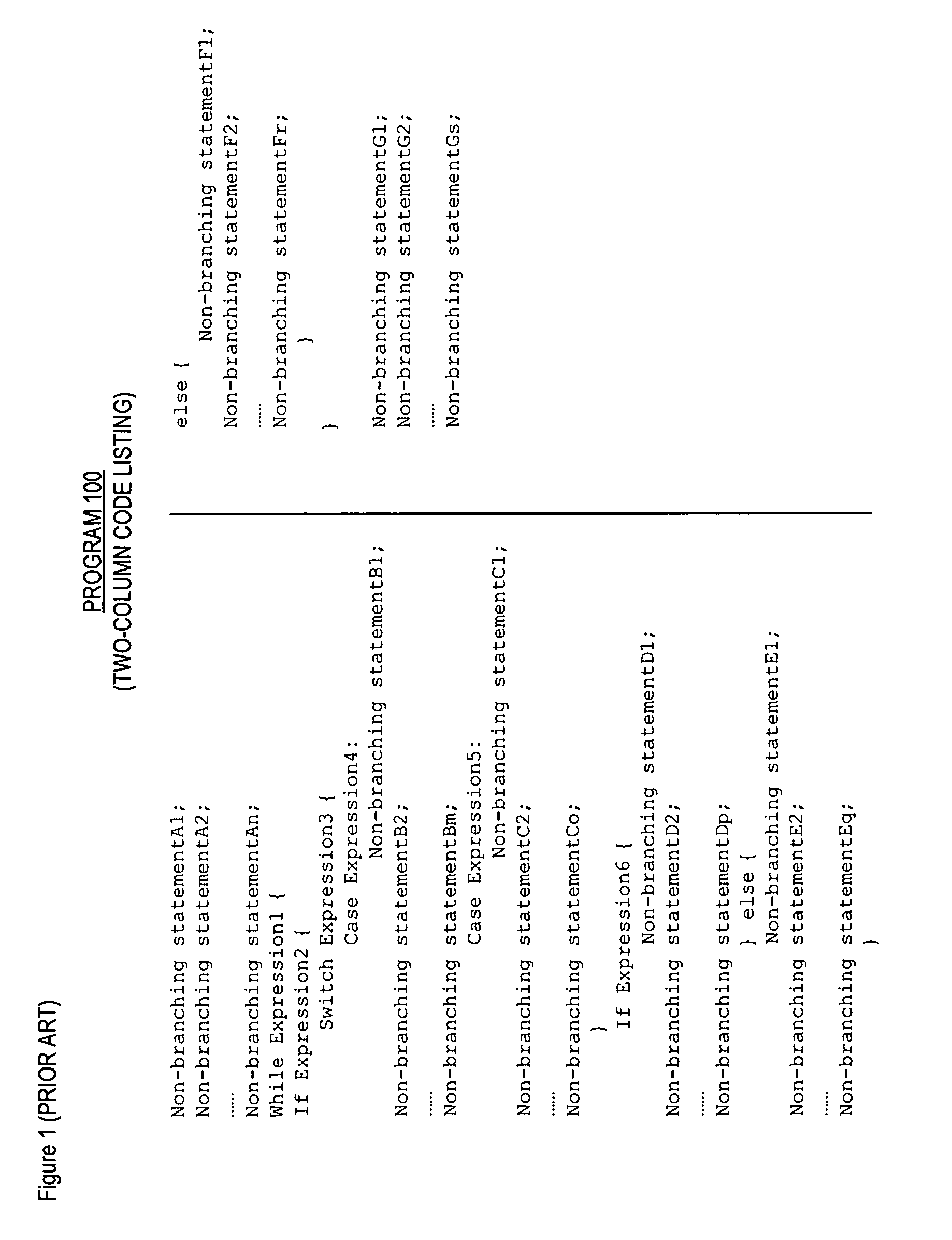Off-line program analysis and run-time instrumentation
a program analysis and runtime technology, applied in the field of software runtime analysis, can solve the problems of consuming a great deal of memory, slowing down the execution of the program, and affecting the performance of the program
- Summary
- Abstract
- Description
- Claims
- Application Information
AI Technical Summary
Benefits of technology
Problems solved by technology
Method used
Image
Examples
Embodiment Construction
[0036]FIG. 8 depicts the high-level architecture of a first illustrative embodiment of the present invention. As shown in FIG. 8, the first illustrative embodiment comprises off-line analyzer 810, run-time instrumenter 820, and testing / monitoring tool 830, interconnected as shown.
[0037]Off-line analyzer 810 comprises software, or hardware, or a combination of software and hardware capable of determining one or more locations in a program at which an instrumentation probe is to be inserted. The determination of instrumentation locations by off-line analyzer 810—referred to as the Super Nested Block Method—is described in detail below. The method is first described informally as applied to illustrative control-flow graph 200, and subsequently a formal specification of the method is provided.
[0038]Informal Description of the Super Nested Block Method
[0039]An informal description of the Super Nested Block Method as applied to illustrative control-flow graph 200 is first provided in this...
PUM
 Login to View More
Login to View More Abstract
Description
Claims
Application Information
 Login to View More
Login to View More - R&D
- Intellectual Property
- Life Sciences
- Materials
- Tech Scout
- Unparalleled Data Quality
- Higher Quality Content
- 60% Fewer Hallucinations
Browse by: Latest US Patents, China's latest patents, Technical Efficacy Thesaurus, Application Domain, Technology Topic, Popular Technical Reports.
© 2025 PatSnap. All rights reserved.Legal|Privacy policy|Modern Slavery Act Transparency Statement|Sitemap|About US| Contact US: help@patsnap.com



